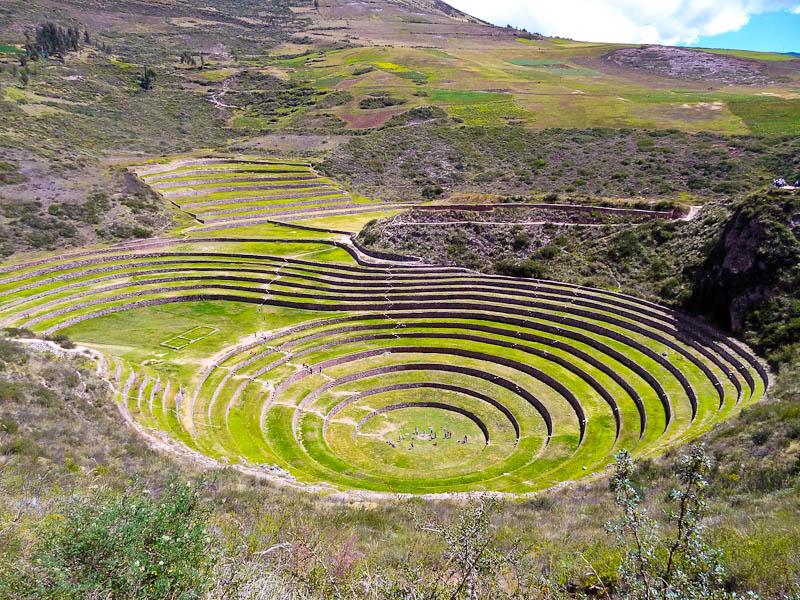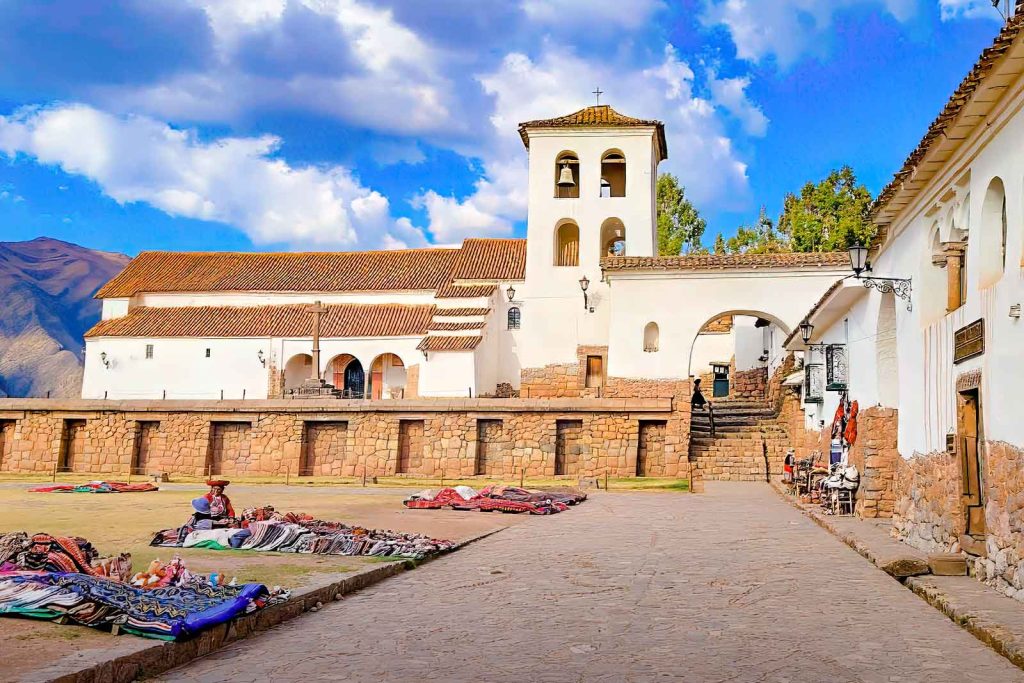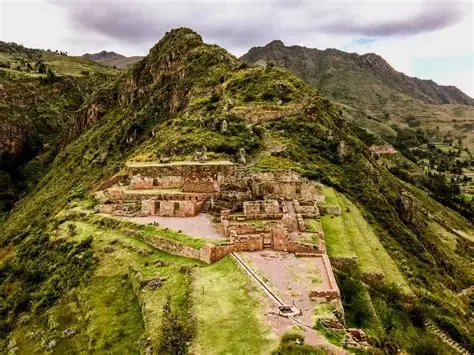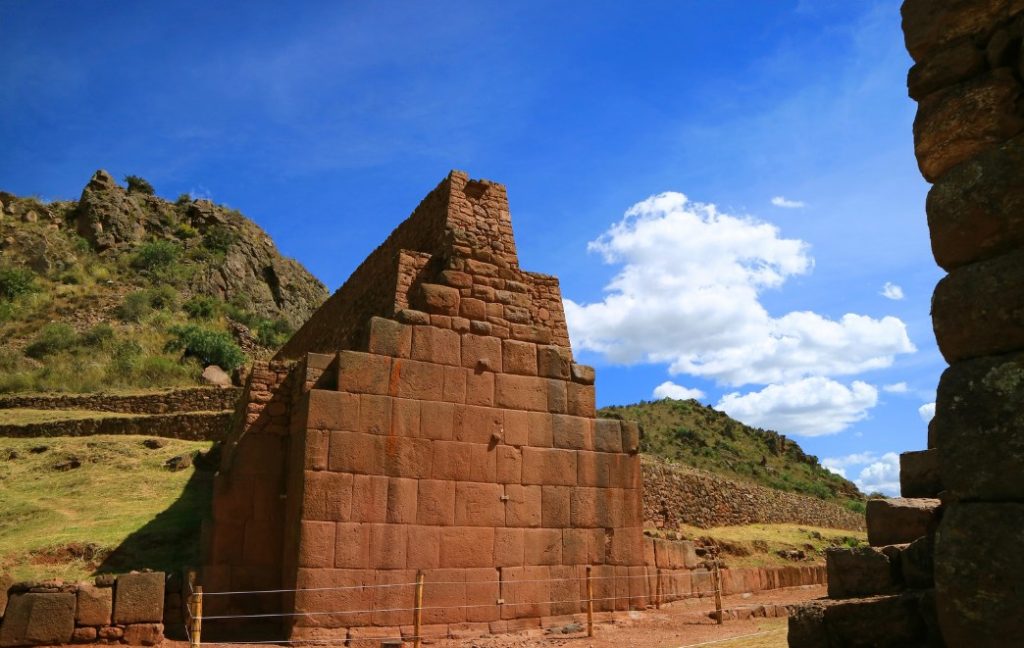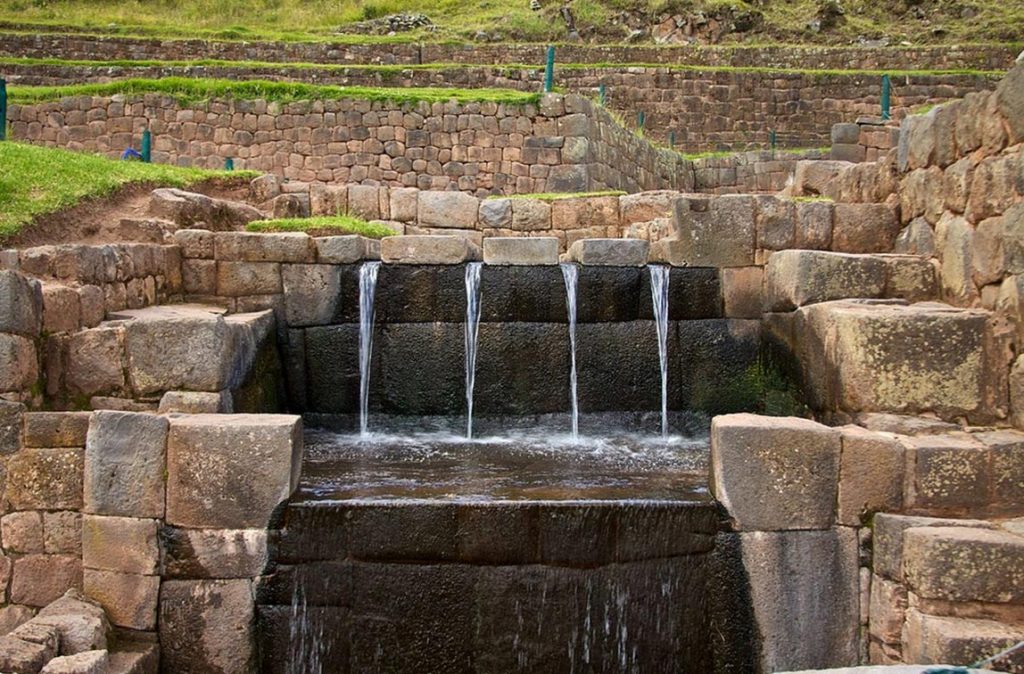When most people think about Peru, their minds instantly go to the majestic Machu Picchu or the mysterious Nazca Lines. But nestled high in the Peruvian Andes lies a stunning natural wonder that has rapidly captured the attention of travelers around the globe: the Rainbow Mountains, locally known as Vinicunca or Montaña de Siete Colores (Mountain of Seven Colors).
This colorful geological masterpiece offers a breathtaking experience that feels almost otherworldly. If you’re planning a trip to Peru or just dreaming about one, this comprehensive guide will tell you everything you need to know about visiting the Rainbow Mountains — from how they were formed to how to get there, what to bring, and when to go.
🏔️ What Are the Rainbow Mountains?
The Rainbow Mountains are part of the Andes mountain range, located in the Cusco Region of Peru, approximately 100 km (62 miles) southeast of the city of Cusco. What makes them truly special is their unique coloration, which includes bands of red, yellow, green, and turquoise, creating a surreal rainbow-like effect that stretches across the ridges and valleys.
These vibrant hues are not painted or artificial — they are the result of millions of years of geological activity, including sedimentation of minerals and weathering over time. For example:
- Red comes from iron oxide rust.
- Yellow is due to iron sulfide.
- Green is caused by chlorite or phyllite compounds.
- White and grey come from quartz and sandstone layers.
Together, they form an incredible natural canvas that looks like it was pulled straight from a dream.
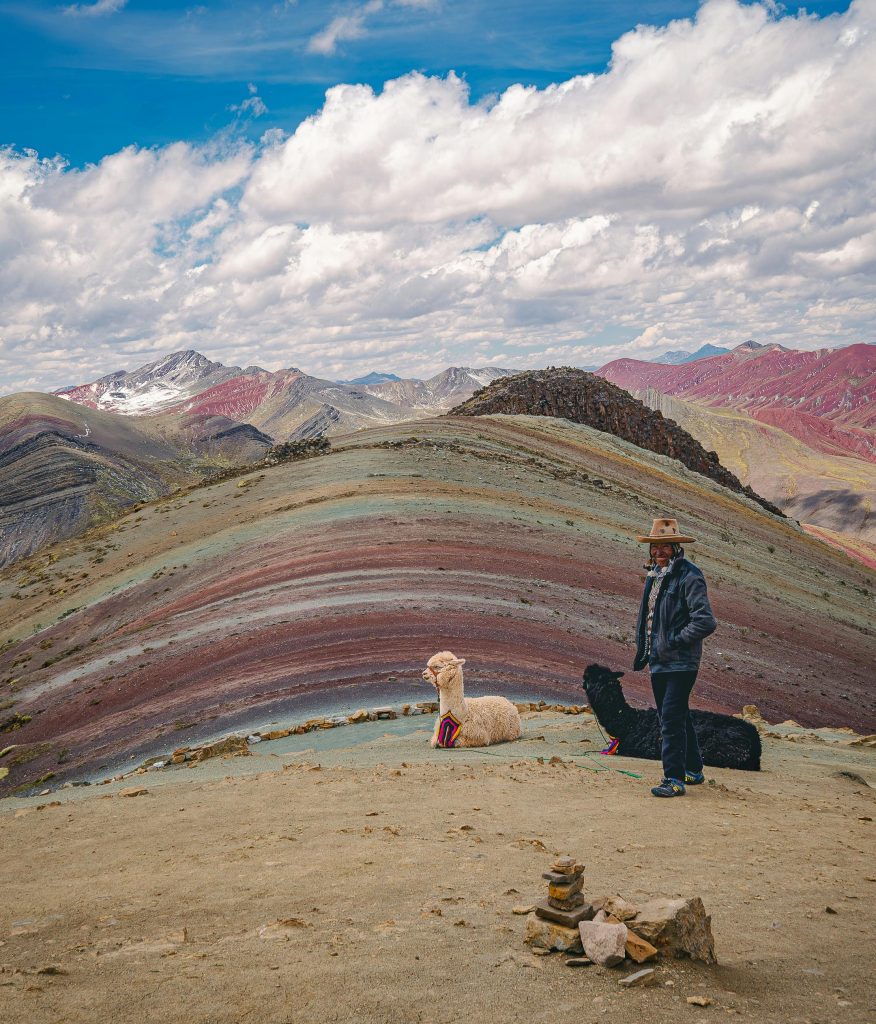
📍 Where Are the Rainbow Mountains Located?
Vinicunca is located in the Ausangate mountain region, part of the Peruvian Andes, at an altitude of around 5,200 meters (17,060 feet) above sea level. The closest major city is Cusco, the historic capital of the Inca Empire and a gateway for many Peruvian adventures, including Machu Picchu and the Sacred Valley.
The region is not only known for its colorful mountains but also for its remote Andean beauty, traditional communities, and sacred snow-capped peaks like Ausangate, which is considered a holy mountain (or Apu) in Andean cosmology.
🕐 A Brief History of the Rainbow Mountains
Surprisingly, the Rainbow Mountains were virtually unknown to tourists until the early 2010s. Though locals and indigenous communities were aware of its existence, the mountain remained off the radar due to its remote location and challenging access.
However, as social media and travel influencers began sharing mesmerizing photos of the rainbow-colored ridges, global interest skyrocketed. Since then, it has become one of Peru’s most popular attractions, drawing tens of thousands of hikers each year.
Despite the recent boom in tourism, the area remains rich in local culture and tradition, with many nearby communities still practicing agriculture, weaving, and herding llamas and alpacas just as their ancestors did.
🌤️ When Is the Best Time to Visit the Rainbow Mountains?
Timing is everything when planning your visit to the Rainbow Mountains. The region is subject to the Andean highland climate, which includes a dry season and a wet season:
- Dry Season (April to October): This is the best time to visit. Skies are clear, and you’re more likely to see the mountains in their full colorful glory without cloud cover or rain. However, it can be very cold, especially in the early morning hours.
- Wet Season (November to March): Rain is frequent, which can make the trail muddy and slippery. Visibility may be reduced due to clouds or fog, and colors may appear more muted. That said, fewer tourists visit during this time, so it’s quieter.
👉 Best months: May, June, and July — excellent weather conditions and vibrant landscapes.
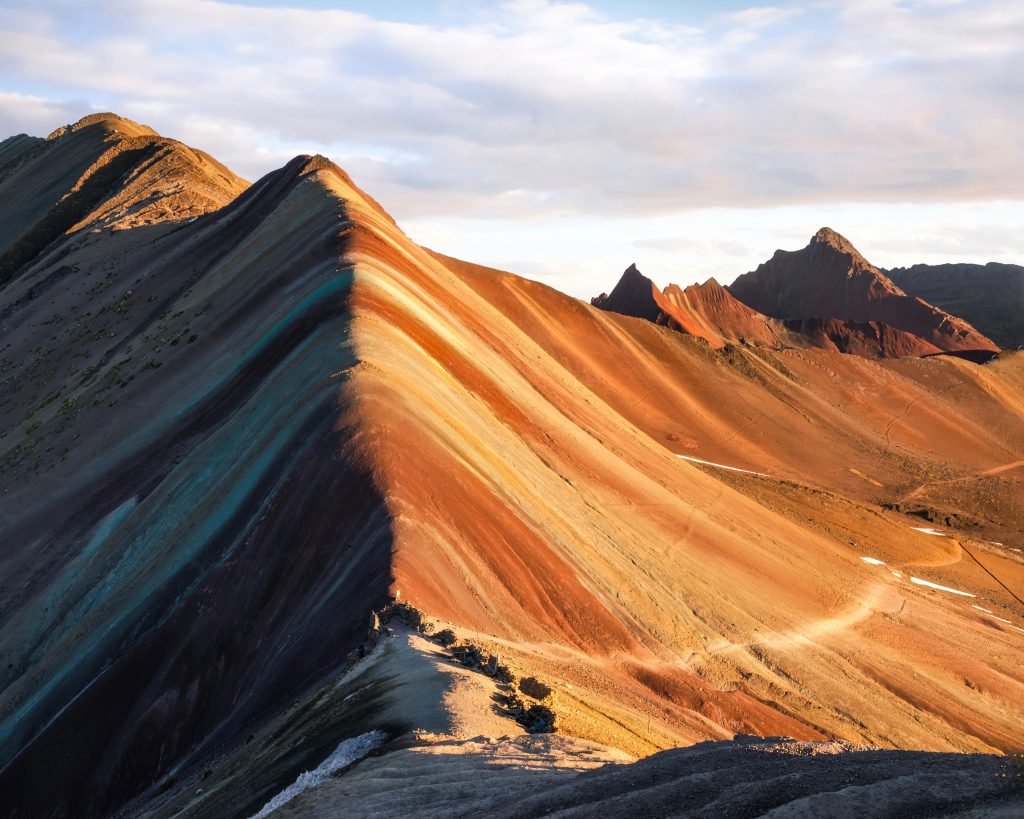
🥾 How to Get to Rainbow Mountain
Getting to Rainbow Mountain is an adventure in itself. Here’s a breakdown of the typical journey:
Option 1: Day Trip from Cusco
This is the most common way to visit Rainbow Mountain. Many travel agencies offer early morning tours that include transportation, breakfast, a guide, and sometimes oxygen tanks for altitude sickness. The typical itinerary looks like this:
- Departure from Cusco: 4:00 – 5:00 AM
- Drive to the trailhead: Around 3 hours to Cusipata or Chillihuani village
- Breakfast stop: Usually in a nearby town
- Hiking to Vinicunca: 1.5 to 2 hours of moderate to challenging hiking (depending on acclimatization)
- Time at the summit: Enjoy the view, take photos, and rest
- Return to Cusco: Arriving around 5:00 – 6:00 PM
Option 2: Multi-day Ausangate Trek
For those seeking a more immersive and off-the-beaten-path experience, the Ausangate Trek is a 5-6 day hiking expedition that includes a visit to Rainbow Mountain along with glaciers, alpine lakes, and traditional Andean villages.
🌄 The Different Rainbow Mountains of Peru
When people say “Rainbow Mountain,” they usually refer to Vinicunca, the most famous one near Cusco. But did you know Peru is home to several rainbow-colored mountains? Each offers its own experience, colors, and level of accessibility. Here’s a breakdown of the most notable ones:
1. Vinicunca (The Classic Rainbow Mountain)
- Location: Cusipata District, Quispicanchi Province, Cusco Region
- Elevation: ~5,200 meters (17,060 feet)
- Distance from Cusco: 3-hour drive + 1.5 to 2-hour hike
- Best for: First-timers and travelers wanting to check the classic version off their bucket list
Vinicunca is the poster child of Peru’s rainbow mountains. Its stripes are wide, and the trek is short but steep. Thousands of travelers visit this site daily. Because of its popularity, expect some crowds—but the view is absolutely breathtaking.
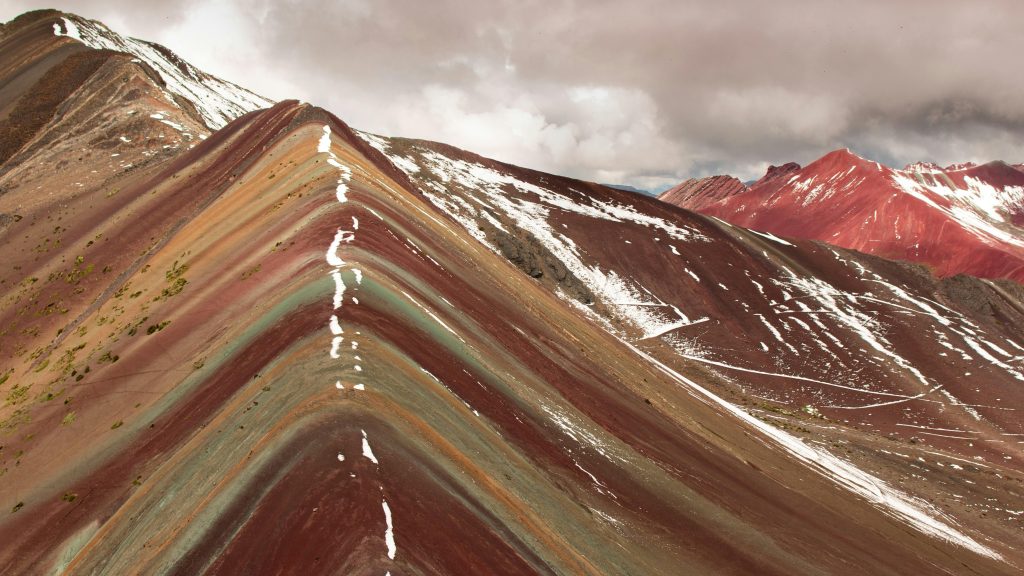
2. Palcoyo Rainbow Mountain
- Location: Also in the Cusco region, but a different valley than Vinicunca
- Elevation: ~4,900 meters (16,000 feet)
- Distance from Cusco: 3.5-hour drive + 30-minute easy walk
- Best for: Families, those not used to high-altitude hikes, or anyone wanting a quieter experience
Palcoyo offers three rainbow-colored mountains and even a Stone Forest nearby. It’s much less crowded than Vinicunca and doesn’t require a strenuous trek. The colors are a bit more subtle, but the overall landscape is mesmerizing and peaceful.
3. Apu T’acllo (The Hidden Rainbow Mountain)
- Location: Near the village of Chillihuani
- Elevation: Around 5,100 meters
- Distance from Cusco: Roughly 4-5 hours by car
- Best for: Adventurous hikers seeking something off the beaten path
Apu T’acllo is often described as the hidden gem among the rainbow mountains. With few tourists and a surreal setting, it’s ideal for photographers and nature lovers who want to experience the colors without the crowds.
🥾 How Difficult is the Hike?
This depends on which mountain you choose, but here’s a general overview:
Vinicunca Hike
- Length: ~7 km (round trip)
- Time: 1.5 to 2 hours each way
- Difficulty: Moderate to hard, mostly due to the altitude
- Options: Horses are available for rent for part of the journey
The trail itself isn’t very technical, but the altitude makes breathing harder. Even fit hikers might feel the effects. It’s strongly recommended to acclimate in Cusco for at least two days before attempting the hike.
Palcoyo Rainbow mountain Hike
- Length: ~1 km round trip
- Time: 30 minutes to 1 hour
- Difficulty: Easy
- Options: Great for all ages and fitness levels
Palcoyo is the better choice for those concerned about altitude sickness or who prefer a more relaxed excursion. You’ll still enjoy stunning views without pushing your body too hard.
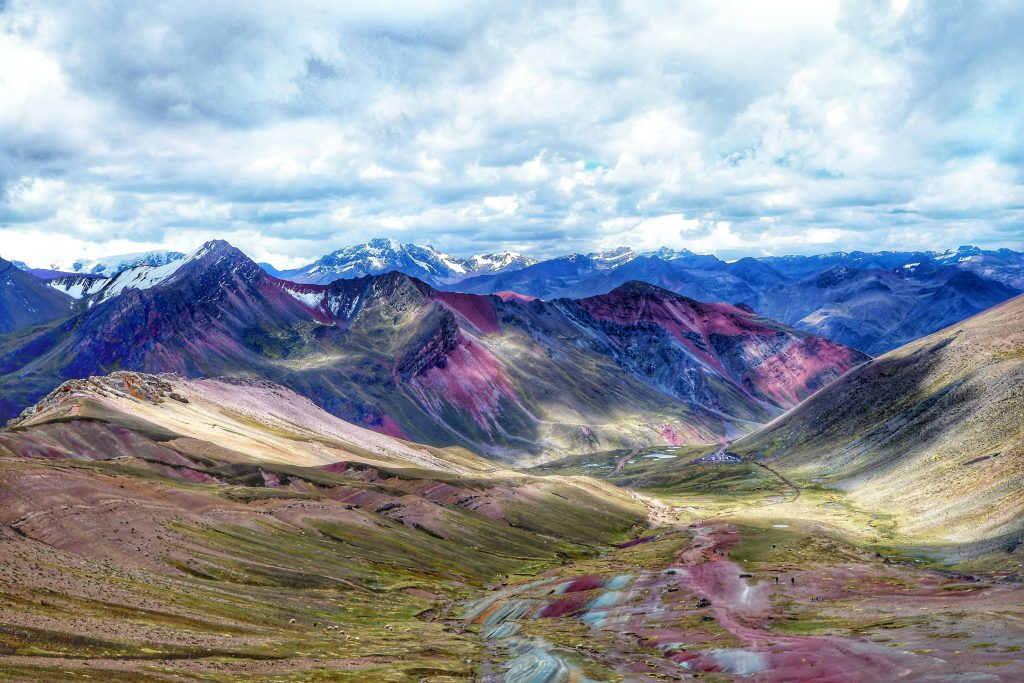
🎒 What to Bring to Rainbow Mountain?
Whether you choose Vinicunca or Palcoyo, you’ll be heading to high altitudes with unpredictable weather, so preparation is key. Here’s a packing list:
Essentials
- ✅ Warm clothing (layered: base layer, fleece, windproof jacket)
- ✅ Gloves and a hat (it gets cold at the summit!)
- ✅ Sunscreen and sunglasses (the sun is strong at altitude)
- ✅ Hiking boots or shoes with good grip
- ✅ Reusable water bottle (stay hydrated!)
- ✅ Snacks (nuts, fruit, energy bars)
Optional but Recommended
- 🐎 Cash (for horses, entrance fees, or buying from locals)
- 📸 Camera or smartphone (the views are worth every shot!)
- 🧥 Rain poncho (showers can happen at any time)
- 😷 Coca leaves or altitude pills (for those not acclimated yet)
🗓️ Best Time to Visit Rainbow Mountain
You can visit Rainbow Mountain year-round, but weather plays a huge role in how vibrant the colors will appear and how difficult the trail will be.
Dry Season: May to September
- ✅ Best time to go!
- ✅ Clear skies, visible colors
- ✅ Less mud and more stable trails
- ⚠️ It’s also the coldest time of year, especially in the mornings
Rainy Season: October to April
- 🌧️ Risk of rain or snow
- ⚠️ Cloud cover may block the view
- ⛔ Trail might be muddy or slippery
If you can, plan your hike for early in the morning during the dry season. This increases your chances of seeing the mountain in full color with fewer crowds.
Let me know when you’re ready for the next part, which will include:
- 🧠 Cultural Significance of the Rainbow Mountains
- 📸 Tips for Taking the Best Photos
- 🚌 Tour Options and Costs
- 💬 Common FAQs from Travelers
🌈 How Was Rainbow Mountain Formed?
Rainbow Mountain, also known as Vinicunca or Montaña de Siete Colores, owes its jaw-dropping beauty to a combination of geological events that took place over millions of years.
During the tectonic shifts of the Andes Mountains, layers of sediment rich in different minerals were pushed up and exposed to the elements. Over time, oxidation and weathering interacted with these minerals, forming the striking array of colors that we now see today. Each color represents a specific mineral compound:
- Red – Due to iron oxide rust
- Green – Result of chlorite
- Yellow – Comes from iron sulphide
- White – Made up of quartzose sandstone
- Brown – A result of rock with magnesium
- Purple/Lavender – A mix of goethite and oxidized limonite
This beautiful “painted” mountain range is truly a natural work of art, a rare phenomenon that makes Rainbow Mountain one of the most unique landscapes on Earth.
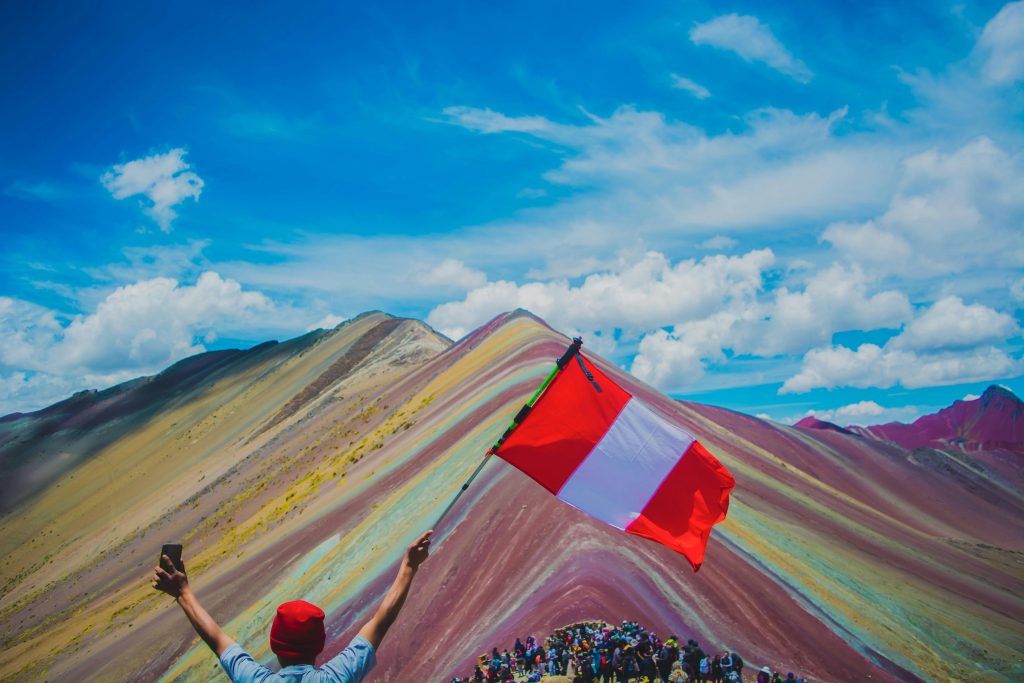
🗺️ Where Is Rainbow Mountain Located?
Rainbow Mountain is located in the Andes of Peru, in the Cusco Region, specifically in the Canchis Province, Pitumarca District. It’s part of the Vilcanota Mountain Range, near the majestic Ausangate Mountain, one of the highest peaks in Peru.
- 🏔 Altitude: Approximately 5,200 meters (17,060 feet) above sea level.
- 🚗 Distance from Cusco: Around 100 kilometers (62 miles) southeast of the city.
- 🕐 Travel Time: Getting there takes around 3 hours by vehicle to the trailhead and another 1.5 to 2 hours of hiking, depending on your pace and acclimatization.
Because of its high elevation, acclimatizing in Cusco for at least 2–3 days before your hike is essential to prevent altitude sickness.
🥾 How to Get to Rainbow Mountain
There are multiple ways to reach Rainbow Mountain, depending on your level of adventure, budget, and available time.
1. Day Trip from Cusco
This is the most common and popular way to visit Rainbow Mountain.
- How it works: Tour agencies pick you up early in the morning (usually around 4:00 AM) from your hotel in Cusco.
- Drive: 3 hours to the trailhead (usually Cusipata or Chillihuani).
- Hike: Around 1.5 to 2 hours uphill (moderate to challenging due to the altitude).
- Return: After spending time on the summit, you descend and drive back to Cusco, arriving by 5:00–6:00 PM.
This option is perfect for travelers with limited time.
2. Multi-Day Trek (Ausangate Trek)
For the more adventurous, the Ausangate Trek offers a full immersion into the high Andes, with Rainbow Mountain included as a highlight.
- Duration: 5–7 days
- What you see: Glaciers, hot springs, remote Andean villages, and incredible landscapes
- Challenge: High altitude, remote terrain, and cold weather
This route is recommended for experienced trekkers looking for an off-the-beaten-path experience.
🐴 Renting a Horse
If you’re concerned about the altitude or physical strain, you can rent a horse at the trailhead.
- 💰 Cost: Around 60 to 100 soles (approximately $15–$30 USD) round trip.
- 🐎 Guided by locals: The horses are led by local Quechua-speaking horsemen and women.
- ⚠️ Important: Horses go only up to a certain point. The final 10–15 minutes to the summit must be done on foot.
Horse rental is a good way to support the local community while also making the hike accessible to more people.
Would you like the next part? It will include:
- Best time to visit
- Tips for avoiding altitude sickness
- Packing list
- What to expect at the summit
- And more 🌄

